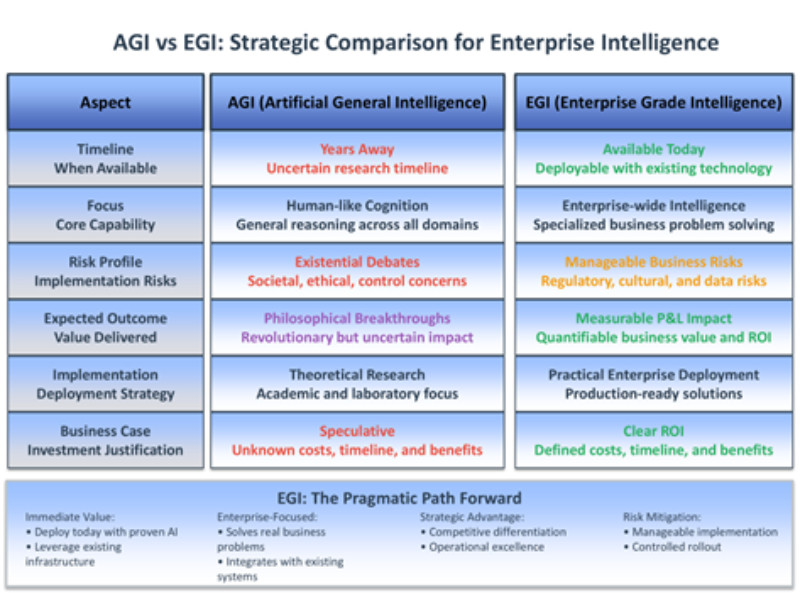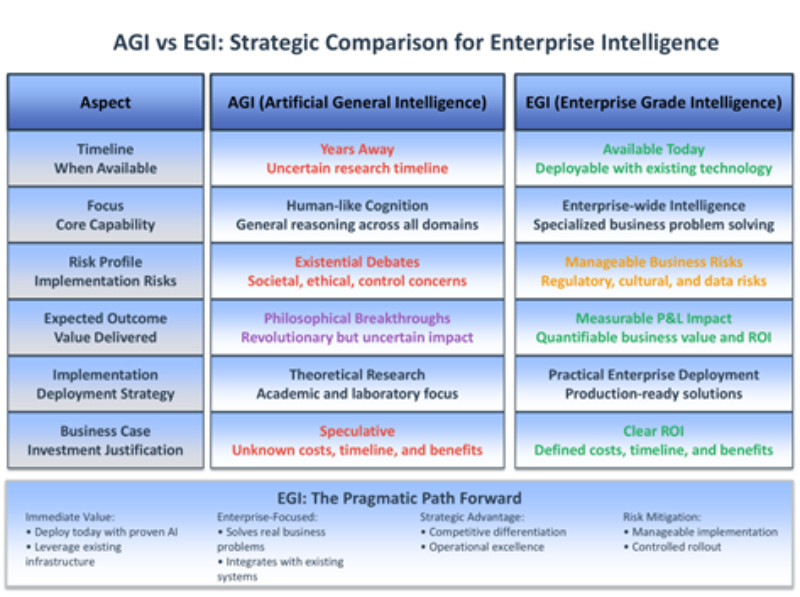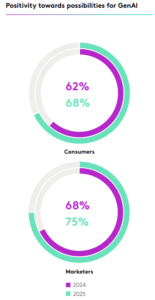EGI fundamentally transforms how enterprises operate — not through recycled pilots, but through systematic reinvention. It demands retiring legacy processes and roles while breaking down the silos that fragment critical workflows such as order-to-cash, procure-to-pay and design-to-release. The foundation requires creating unified enterprise taxonomies, building interconnected knowledge graphs and liberating decades of data trapped in PDFs, spreadsheets and disparate systems. This data — originally designed for yesterday’s rule-based world — must be re-engineered, labeled for AI consumption, teaching domain-specific LLMs your unique business context.
When EGI takes hold, your organization deploys an army of intelligent agents exhibiting goal-driven autonomy, self-learning capabilities and adaptive behavior in complex environments. These agents coordinate as specialists across domains, seamlessly transferring tasks and context, sharing knowledge and solving interconnected problems. This is the EGI flywheel in action: Intelligent, collaborative systems managing enterprise-scale complexity while continuously learning and improving.

Raman Mehta
According to McKinsey’s 2024 Global Survey on AI, 65% of organizations are already regularly using generative AI, nearly double from just ten months ago. The enterprise AI market tells the story: valued at $23.95 billion in 2024, it’s projected to reach $155.2 billion by 2030, growing at 37.6% CAGR.






